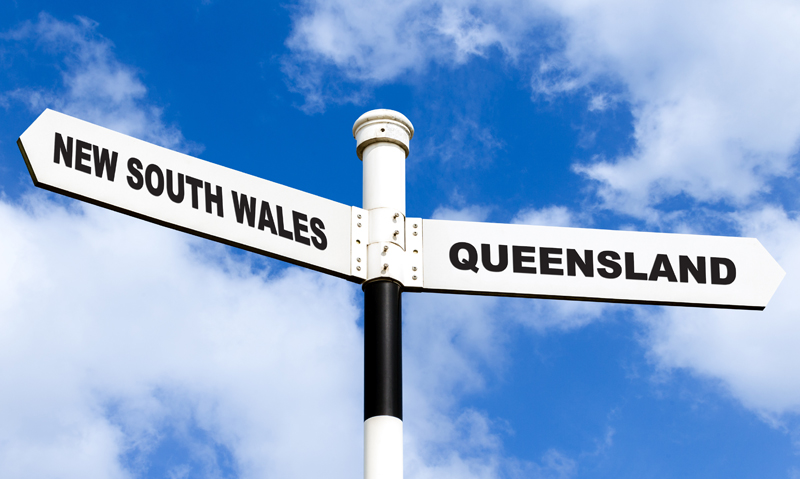LINKING hospital patient data across Australian states will open up a host of research opportunities to more accurately track patient care and better inform health policy, say researchers.
Associate Professor James Boyd, director of Population Health Research Network (PHRN) – Centre for Data Linkage, said expanding data-linkage capability across the country would allow researchers to conduct large, powerful analyses of patient movement and disease trends not possible within state boundaries.
“This includes things that we could never do before, like complete studies of rare diseases … anything that allows us to look at the whole population across Australia is really important”, Professor Boyd told MJA InSight.
Professor Boyd coauthored research published in the MJA that has, for the first time, linked patient-level data across four Australian states — NSW, Queensland, WA and SA. (1)
The research looked at the movement of hospital patients between states and identified hotspots of cross-border hospital use and hospital-related deaths.
In the first of four proof-of-concept projects, the researchers found that in the 5 years to 2009, about 3% of all hospital patients had travelled across a state border to receive acute hospital care, which had important implications for health services planning and evaluating patient outcomes.
“Longitudinal health studies that rely on administrative data from a single jurisdiction for hospital morbidity and mortality … outcomes are at risk of follow-up biases for participants living in border regions, particularly in northern and western NSW, Victoria and the NT”, the researchers wrote.
Professor Anna Ferrante, deputy director of the PHRN Centre for Data Linkage, told MJA Insight the ability to track patients across states at an individual level would enable researchers to quantify the extent of this movement and evaluate the shifting health care burden.
Dr Diane Watson, CEO of the National Health Performance Authority, said the authority welcomed this work and similar research projects. “It helps to ensure we acknowledge current limitations in data for some patients and hospitals, and what analyses might need to be done in the future to ensure accurate information for each and every hospital in the nation”, she said.
Alison Verhoeven, CEO of the Australian Healthcare and Hospitals Association, said more comprehensive data around the patient journey enabled better measurement of health outcomes and enabled the health system to better plan and respond to patient needs.
“Data linkage offers the potential to combine datasets that are information-rich but may be disconnected. Linking the data can provide a more comprehensive understanding of patients’ journey of care”, Ms Verhoeven told MJA InSight.
The study authors revealed some hurdles in the integration of cross-jurisdictional data due to “differences in jurisdictional legislation, operating environments and the coding practices of state-based custodians”.
“Future research would benefit from the development of national metadata and standard definitions that would enable data across jurisdictions to be more readily integrated and understood”, they wrote.
Ms Verhoeven said while national definitions existed for health metadata items, variable interpretation, application and collection impacted on the consistency of data between jurisdictions. (2)
“This research demonstrates the importance of resolving data and technology issues to support the implementation of an effective e-health strategy and to deliver better health outcomes and improve health service planning and evaluation”, she said.
Professor Siaw-Teng Liaw, a Sydney-based GP with expertise in clinical and health informatics, said a further hurdle in the applicability of such research was the lack of primary care data.
“If you want to look at the full story and answer meaningful research questions about health services, there is a big gap in the community health and primary care data”, Professor Liaw told MJA InSight. “This is one of the biggest gaps we have to deal with in our health statistics to guide policy and practice.”
Professor Liaw acknowledged that it was early days in this project and said patient-level data linkage had the potential to yield useful information.
However, he said the exclusion of 1.44 million records in the study and a lack of reflection on the quality of the dataset was concerning.
“If it’s going to inform policy or practice, it needs to be good data”, he said.
2. AIHW: METeOR

 more_vert
more_vert
This raises a wider topic that is broader than medicine alone. Gradually Australia is moving towards a more national identity and the states are becoming a liability to efficient function of health care and also to so many other aspects of life. How long will it take for the state governments to be dismantled and its functions given to Local and Federal government ? The sooner the better.
Access to hospital records at any hour of day or night would make my VMO job so much easier – patient history is sometimes crucial to management decisons.
It recently took several days to find that the lady unsteady on her feet had previously been treated for a meningioma.
While researchers might like such information it is perhaps of even greater value to make such information available to practitioners outside of major hospitals!